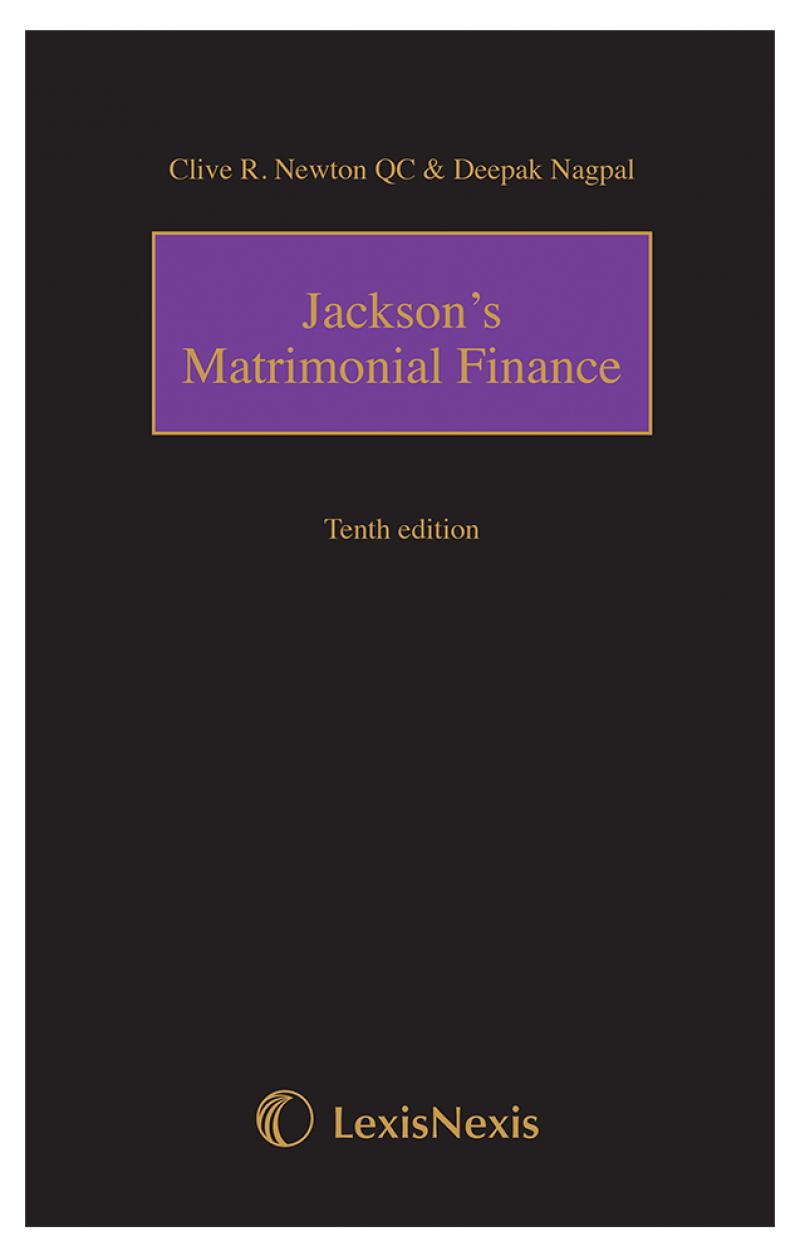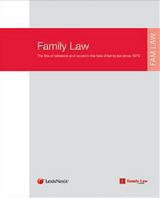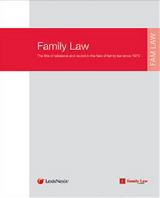Disclosure, protocol, care proceedings, family law, criminal proceedings, David Burrows, communication, child abuse
Police evidence and care proceedings
The story of the (authorised) police bug in the home of parents in care proceedings (see
Cumbria County Council v M & Ors [2016] EWFC 27) to try to identify which parent had killed their child prompts thoughts of what the relationship is between family courts, police and local authorities when it comes to communication of information about child abuse.
Where care and criminal proceedings are in contemplation, are under way or are concluded the procedures for communication of information are governed against the back-drop of the contempt requirements of the Administration of Justice Act 1960, s 12(1)(a) (see below). The provisions which deal specifically with release of information as between courts, police and the local authority are:
In the earlier
Cumbria County Council v M & Ors [2014] EWFC 18 judgment, in respect of the same family as in the [2016] hearing, Peter Jackson J made a care order in respect of a child A, and held that A’s father was responsible for the injuries to A’s 6-week-old brother, K, which lead to his death. The father was prosecuted but, after conclusion of the care proceedings, he was found not guilty of manslaughter.
The delays of police and social workers in the follow up of the case were extensive, and might have seriously threatened the well-being of A. It was 3 months after the police had information as to the likely cause of K’s death that the police told the local authority; and A had been home with her parents for two years before she was removed and care proceedings were taken. Some information as to their enquiries was released by the police to the court in the care proceedings; but this did not include a recording they had taken. This was explained by Peter Jackson J in his later short [2016] judgment, as follows:
'[14] Turning to the non-disclosure [of bugging of the parents by the police: largely inconclusive], I find that the nub of the matter is as follows. The existence of the recording was known to the three investigating officers in 2013, but they did not consider that it had any evidential value. It should have been obvious, in particular to the officer who appeared before me just four weeks after the recording was made, that it had to be disclosed, but it was not. Because of its special status, it was not held on the case file. The Constabulary's lawyers and the officers who were not involved in the investigation process were therefore not aware of its existence until a much later stage.
[15] The efficient process of disclosure between the criminal and family jurisdictions is essential to the proper administration of justice. It is governed by protocols and on occasions reinforced by court orders. The criminal and family courts must be able to rely on assurances that all relevant material has been disclosed, though in some cases they may have to resolve claims of public interest immunity.'
Protocol: disclosure of information on alleged child abuse
As Peter Jackson J noted: ‘the efficient process of disclosure … is governed by protocols’, in particular by the 2013 Protocol, which came into force on 1 January 2014. It was therefore coming into operation as the care proceedings in the 2014
Cumbria hearing were under way. It was in force when the care order was made.
The main object of the 2013 Protocol is to set up an exchange of information and for full co-operation between the authorities involved in child protection and in bringing cases to court concerning child abuse (‘sexual and non-sexual’). It sets up procedures for information and notification of proceedings from police and CPS; and for the passing on of information from the family justice system to the police (summarised in Part 3: Aims and objectives). The 2013 Protocol uses the term ‘family justice system’ to mean care proceedings.
The 2013 Protocol is divided into three Parts:
(a) Part A: Police information for care proceedings – disclosure by the police of information into the care proceedings; confirmation by the police of the issue of criminal proceedings; and provision for court orders for disclosure by the police;
(b) Part B: Information for criminal proceedings from care proceedings – disclosure from care proceedings into the criminal justice system; disclosure of information by the local authority to the police; and provision for formal application by the police to the Family Court for release of information and the court’s judgment; and
(c) Part C: Linked directions hearings – ‘linked criminal and care directions hearings’ are to be considered by the allocated case management judge in the Family Court; and the local authority lawyers, in such cases, must liaise with the CPS as to what its then current position is in care proceedings (para 16.6). Part 17 sets out what must be considered at any linked directions hearing.
The emphasis in the 2013 Protocol is on co-operation, but with all parties being aware that there may be times when full disclosure and co-operation is not possible on grounds of confidentiality. For example, specific provision is made in section 14 for what happens if a local authority does not want information disclosed by the prosecution to the defence in the criminal proceedings (ie to a parent or parents, or other alleged perpetrator, in care proceedings). In the rare event that this is necessary, it is for CPS to make a public interest immunity application in the criminal proceedings (para 14.2, Criminal Procedure Rules 2013, r 22.3). The fact that ‘documents in relation to Family Court proceedings’ (ie children proceedings) must not be included in files to be seen by the police is stressed at para 10.4.
Co-operation: disclosure by the local authority and the court to the police
In Part B, sections 10 to 12 deal with ‘disclosure’ by the local authority to the police, and with applications by the police to the Family Court for material relating to family proceedings (including the text of any judgment). Section 11 deals mostly with procedural issues for police obtaining material, and in particular stresses the need for the police to give notice of any application to all parties where possible (para 11.7). Paragraph 11.8 asserts without citation of authority that the court may order release of material to the police or CPS ‘without application having been made’.
Certain judgments will be published in any event. Paragraph 12.2 states that the local authority must notify the police if there is a judgment not yet transcribed which it considers to be relevant to current criminal proceedings, and it must ask the Family Court to speed up transcription (para 12.3). Disclosure by the local authority to the police (summarised in Section 10 of the 2013 Protocol, especially paras 10.3 to 10.6) and communication of other information must be seen in the light of the current court rules, as explained in
Re X and Y (below).
Re X and Y: communication of information to the police
The practical application of the procedures in the 2013 Protocol at a time when it was coming into force can be seen in operation in
Re X and Y (Disclosure of Judgment to Police) [2014] EWHC 278 (Fam), [2015] 1 FLR 1218, where Baker J was dealing with an application by the police to see a judgment in which the judge had recorded that the father of a child had admitted, after the making of a care order, that he had perpetrated the injuries on one of three children. In his first fact-finding judgment the judge had found that the injuries were probably caused by one of the parents. He urged both parents, despite that finding, that they should be more frank with the court about what had really happened. Two days later the father confessed that he had caused the injuries to the child. The parents separated. Per Baker J:
'[5]… The matter was therefore restored before me and I directed a further fact-finding hearing to be listed urgently before me. The father duly filed a statement in which he described in detail the circumstances in which he had come to inflict the injuries. The mother filed a statement setting out her response to the father's confession. Two experts filed addendum reports in which they accepted that the injuries could have been sustained in the incidents described by the father.
[6] The resumed fact-finding hearing took place, at the conclusion of which I delivered an ex tempore judgment which has also been transcribed but, to date, not released for publication nor disclosed to the police. In that judgment (hereafter referred to as "my second judgment"), I concluded, on a balance of probabilities, that the injuries had been inflicted by the father in the manner described in his statement ...'
Application to restrain communication of judgment to the police
The mother was exonerated and, ultimately, the children remained in her care subject to a supervision order. The father applied for an order prohibiting the local authority or any other party from communicating any information to the police or CPS. The police filed a statement asking for ‘disclosure of any information that had come to light in these proceedings indicating the perpetrator of [the child’s] injuries 'in order that the decision to prosecute that person can be taken'. The court was dealing with the father’s restraint application since, as will be seen, over the entitlement of a party to proceedings to pass information to the police.
Baker J reviews the law fully in relation to communication of material from care proceedings.
Re X and Y was specific to the father having admitted causing injury, so Children Act 1989, s 98 (self-incrimination by the father) was relevant to the issue on the law, but it is not directly relevant to the question of release of the judgement to the police. What could be released to the police by the local authority from the children proceedings? If the local authority or any other party had released the second judgement complied with the police request it could have been a contempt; though, in the light of the provisions of FPR 2010 (considered below), the father applied for an order preventing release of the judgment to the police.
Baker J referred first to the Administration of Justice Act 1960 s 12(1) and then considered the relevant rules. Section 12(1)(a) provides that, where proceedings are held in private, publication of information in relation to the proceedings is not on its own a contempt, save in relation to children proceedings. Rules or order of the court may alter or disapply these provisions (see, eg,
A v Ward [2010] EWHC 16 (Fam), [2010] 1 FLR 1497;
Re J (A Child), sub nom Re J (Reporting Restriction: Internet: Video) [2013] EWHC 2694 (Fam), [2014] 1 FLR 523).
Communication of information in children proceedings
FPR 2010 now makes specific provision for ‘communication of information’ (the title of FPR 2010 Part 12 Chapter 7 and the practice direction which supports it) in children proceedings. FPR 2010 r 12.73(1) provides as followed:
'12.73 Communication of information: general
(1) For the purposes of the law relating to contempt of court, information relating to proceedings held in private (whether or not contained in a document filed with the court) may be communicated –
(a) where the communication is to [various individuals and bodies such as the legal representative of a party, Legal Aid Agency, a court appointed expert etc, formally entitled to receive information];
(b) where the court gives permission; or
(c) subject to any direction of the court, in accordance with rule 12.75 and Practice Direction 12G.'
PD12G lists communications in children proceedings which can be passed on to particular bodies or individuals. Paragraph 2.1 sets out a table which deals with ‘any information relating to the proceedings’. It enables this information to be passed on by specified individuals – for example, a party, legal representative or others lawfully in possession of the information – for specified purposes, other than the proceedings. For example, a party or a legal representative can pass information to a person conducting ‘an approved research project’. Any communication in accordance with the provisions of PD12G is, by para 1.2, ‘Subject to any direction of the court ...’; that is subject to any other court order – such as that sought by the father in
Re X and Y.
The local authority – one of the specified individuals, as a party to the proceedings – did not need permission under r 12.73(1)(b) because this is required by the police for a criminal investigation which came within the terms of para 2.1. The text or summary of the judgment was included within what could be communicated. The position under the rules, as summarised by Baker J, is as follows:
'[16] Thus the scheme of the current rules is that communication of information relating to care proceedings falls into three categories:
(1) communications under r 12.73(1)(a), which may be made as a matter of right;
(2) communications under r 12.73(1)(c) and PD 12G paras 1 and 2, which may be made, but are subject to any direction by the court, including, in appropriate circumstances, a direction that they should not be made; and
(3) other communications, which under 12.73(1)(b) may only be made with the court's permission.
Plainly, whereas the onus in respect of proposed communications under r 12.73(1)(b) lies on the party seeking permission to communicate, the onus in respect of communications that would otherwise be permitted under r 12.73(1)(c) and Practice Direction 12G paras 1 and 2 lies on the party contending that such communication should not be permitted.'
Re EC and disclosure of material from care proceedings
Baker J treated
Re C (A Minor) (Care Proceedings: Disclosure) [1997] Fam 76, [1997] 2 WLR 322, sub nom Re EC (Disclosure of Material) [1996] 2 FLR 725 as still the leading authority on release of information to the police; though the relative importance of the factors identified in
Re EC might shift with the passage of time. That case was decided under a much earlier version of the rules for children proceedings; it was likely that the current rules and case law would make the courts more, rather than less, disposed towards release to the police.
The factors in
Re EC listed by Swinton Thomas LJ (at 85 and 733 respectively) and as relevant here are:
(1) The welfare and interests of the child or children concerned in the care proceedings. If the child is likely to be adversely affected by the order in any serious way, this will be a very important factor;
(2) The welfare and interests of other children generally;
(3) The maintenance of confidentiality in children cases;
(4) The importance of encouraging frankness in children's cases ...;
(5) The public interest in the administration of justice. Barriers should not be erected between one branch of the judicature and another because this may be inimical to the overall interests of justice;
(6) The public interest in the prosecution of serious crime and the punishment of offenders, including the public interest in convicting those who have been guilty of violent or sexual offences against children. There is a strong public interest in making available material to the police which is relevant to a criminal trial. In many cases, this is likely to be a very important factor;
(7) The gravity of the alleged offence and the relevance of the evidence to it. If the evidence has little or no bearing on the investigation or the trial, this will militate against a disclosure order;
(8) The desirability of co-operation between various agencies concerned with the welfare of children, including the social services departments, the police service, medical practitioners, health visitors, school, etc. This is particularly important in cases concerning children;
(9) …;
(10) Any other material disclosure which has already taken place.
Any order for communication in
Re X and Y would be limited to ‘criminal investigation’. Any further communication by the police, for example for disclosure in a criminal trial, would only be with permission from the court, as the judge made clear at paras [21] and [25].
Baker J affirmed the view of Thorpe LJ in the Court of Appeal in
Re H (Care Proceedings: Disclosure) [2009] EWCA Civ 704, [2009] 2 FLR 1531 as to the importance of
Re EC:'[35] As indicated in Re H by Thorpe LJ, Re EC remains the leading authority when deciding whether to disclose confidential information arising in care proceedings. The analysis conducted by Swinton Thomas LJ was comprehensive and the 10 factors identified by him all remain relevant to such a decision.'
The relative importance of the 10 factors may have changed over the years [36], Baker J said; but he was clear that the
Re EC factors in favour of communication of the judgment on the restricted terms he ordered was justified (paras [38]-[55]). Baker J emphasised the factors listed at (5) to (8), especially in relation to the importance of co-operation between all agencies involved with child protection and the public interest in the administration of justice.
He draws particular attention to the 2013 Protocol:
'[46]… The importance of such co-operation – recognised by the courts at the time of the Re EC decision – is now perceived as being crucial in maximising the protection given to children. This recognition underpins the recently published 2013 Protocol and Good Practice Model: Disclosure of information in cases of alleged child abuse and linked criminal and care directions hearings (the 2013 Protocol).
[48] Linked to this … is the fifth factor identified by Swinton Thomas LJ – the public interest in the administration of justice, and the argument that barriers should not be erected between one branch of the judicature and another because this may be inimical to the overall interests of justice. Again, the importance of this principle has been widely accepted, and it is again reflected in the terms of the 2013 Protocol.'
Public interest in the investigation of crime
Baker J went on to support the ‘public interest in prosecution of serious crime and the gravity of this offence’ by reference to factors (6) and (7) and by drawing attention to the fact that it is not the job of a judge, but of the police, to investigate crime:
'[49] As has been acknowledged by many judges on previous occasions – for example, Baron J in Re M (Care: Disclosure to Police) [2008] 2 FLR 390 at para [18] – it is the police who have a duty to investigate crime and it is the CPS which has a duty to decide whether to bring criminal charges. It is not for the family court to decide whether prosecutions should be brought or pursued. Disclosure of the judgment will enable the police and CPS to decide whether or not to pursue the criminal investigation. In carrying out the balancing exercise as to disclosure of the judgments, this court recognises the importance of not impeding those bodies from carrying out their statutory duties.'
The 2013 Protocol and the references in FPR 2010 provide the framework for co-operation in communication between local authorities, the police and the family courts. It remains to be seen to what extent it can specifically be relied upon in individual cases to assist with such communication for the help of abused children.
You can follow David Burrows on Twitter: @dbfamilylawThe views expressed by contributing authors are not necessarily those of Family Law or Jordan Publishing.











 10 MAR 2025
10 MAR 2025

 10 MAR 2025
10 MAR 2025

 10 MAR 2025
10 MAR 2025

 10 MAR 2025
10 MAR 2025

 10 MAR 2025
10 MAR 2025













Leave a commentOrder by
Newest on top Oldest on top